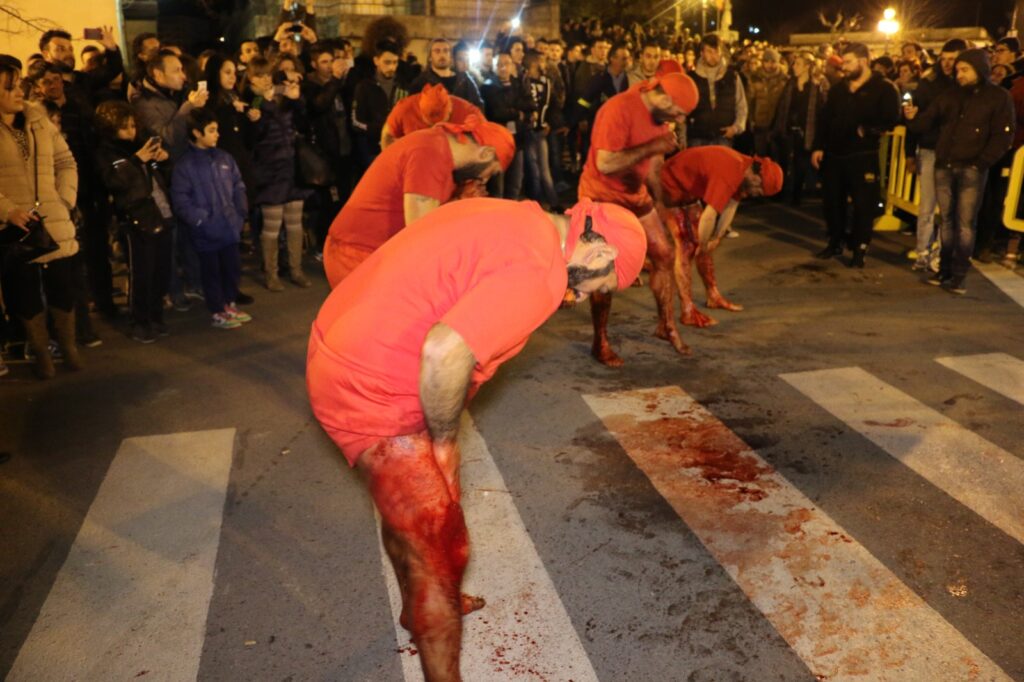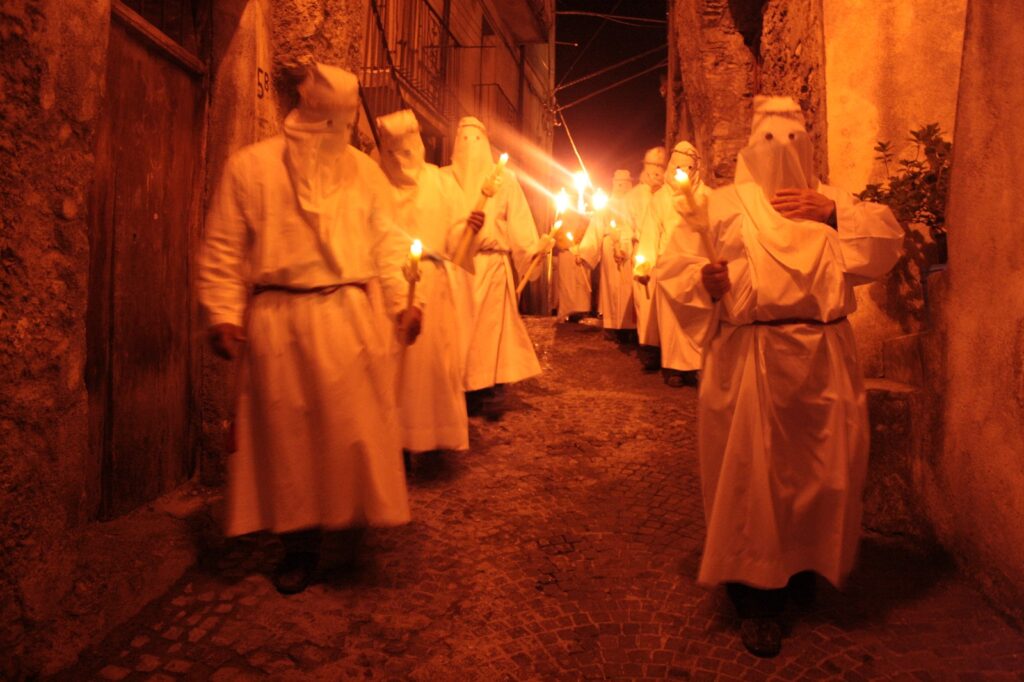Il rito dei Battenti (“Vattienti” in dialetto) è una tradizione secolare che si svolge a Verbicaro, in Calabria, durante la Settimana Santa. Si tratta di una tradizione legata all’autoflagellazione cattolica, che affonda le sue radici nel periodo medioevale. Ogni anno, uomini vestiti di rosso, con gambe insanguinate, percorrono le strade del paese collinare cospargendo sangue sui portali delle chiese, in adempimento a un voto personale. Nonostante il suo carattere cruento, il rito attira fedeli e curiosi non soltanto dalla Calabria, ma da tutta Italia. Nel tardo pomeriggio del Giovedì Santo, i Battenti si riuniscono in cantine del centro storico, dove ai turisti e spettatori vengono offerti pietanze e prelibatezze locali. Dopo il banchetto, gli uomini – scalzi e vestiti di rosso – si preparano colpendo le gambe con panni ruvidi e un tappo di sughero con schegge di vetro tenute ferme da uno strato di cera d’api: il “cardidd”.

Il vino, prima soffiato sulle ferite, oggi viene versato direttamente sulla pelle per disinfettare. Arrivata la mezzanotte, la processione ha inizio. In circa due ore, i Battenti percorrono tre volte un tragitto che tocca chiese e edicole sacre, lasciando tracce di sangue sugli edifici. Concludono il giro alla “fontana vecchia”, dove si lavano, indossano abiti civili, ed entrano nella chiesa di San Giuseppe, accompagnati dal suono di strumenti rudimentali e da figure incappucciate di bianco.

È questo il momento della preghiera, il cuore sacro del rito, in netto contrasto con la dimensione profana che lo precede. Dopo la preghiera, i Vattienti si allontanano dalla chiesa, lanciando baci al Sacramento e senza mai voltare le spalle, come da rito. Il percorso coincide con quello della processione dei Misteri, che inizia alle 3 di notte del Venerdì Santo. Oltre che per il suo folclore, l’evento attira molti turisti anche per la rinomata enogastronomia locale.
English Version
Holy Thursday: The Centuries-Old Rite of the “Vattienti” Lives On
The rite of the Battenti (known in local dialect as “Vattienti”) is a centuries-old tradition held in Verbicaro, Calabria, during Holy Week. It is rooted in medieval Catholic practices of self-flagellation. Each year, men dressed in red, their legs bloodied, walk through the streets of the hilltop village, smearing blood on the doorways of churches as fulfillment of personal vows. Despite its violent and bloody nature, this rite attracts many tourists not only from the region, but all over Italy. In the late afternoon of Holy Thursday, the Battenti gather in wine cellars in the town’s historic center, where tourists are offered traditional local dishes and delicacies. After the feast, the men – barefoot and clad in red – prepare themselves by striking their legs with rough cloths and a cork stopper embedded with slivers of glass, held in place by a layer of beeswax: the so-called “cardidd.” While in the past wine was blown onto the wounds to disinfect them, today it is directly poured over the skin. At midnight, the procession begins. Over the course of about two hours, the Battenti complete three rounds of a route that passes by churches and sacred shrines, leaving visible traces of blood on the buildings. The journey ends at the “old fountain,” where they wash themselves, wear regual clothes, and proceed into the Church of San Giuseppe, accompanied by the sound of rudimentary instruments and figures dressed in white hoods. This marks the moment of prayer – the sacred heart of the rite – in stark contrast to the profane dimension. After praying, the “Vattienti” leave the church, blowing kisses to the Blessed Sacrament and never turning their backs, as the tradition demands. Their route overlaps with that of the “Procession of the Mysteries,” which begins at 3:00 a.m. on Holy Friday. Today, beyond its powerful folklore, the event also draws many tourists eager to experience the region’s renowned food and wine culture.

